Egypt’s ancient wonders

AlexAnton/Shutterstock
Home to spectacular desert landscapes, the planet’s longest river and millennia-old monuments found nowhere else, Egypt is quite unlike any other country in the world. Sandwiched between the Middle East and northeast Africa, this unique and fascinating place has given us some of the greatest ancient treasures on Earth. From elaborate tombs to dazzling pyramids, glistening jewels and soaring statues, these are just some of the incredible treasures the Ancient Egyptians left behind.
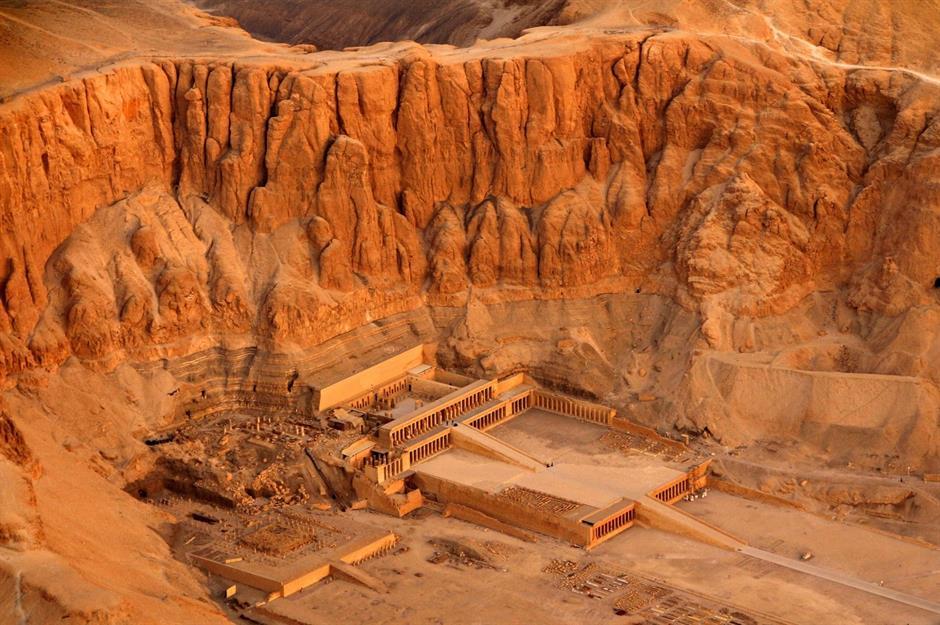
SAPhotog/Shutterstock
The Ancient Egyptians built spectacular mausoleums for their pharaohs and of all these burial shrines, the Valley of Kings has to be the most well-known. Over 60 tombs have been discovered at this UNESCO World Heritage Site in Luxor, along with antechambers filled to bursting with gilded furniture and precious jewels. While mummification preserved the bodies, the tombs acted as gateways to the afterlife, where pharaohs would become one with the gods. Here, Egypt’s most iconic king was laid to rest…
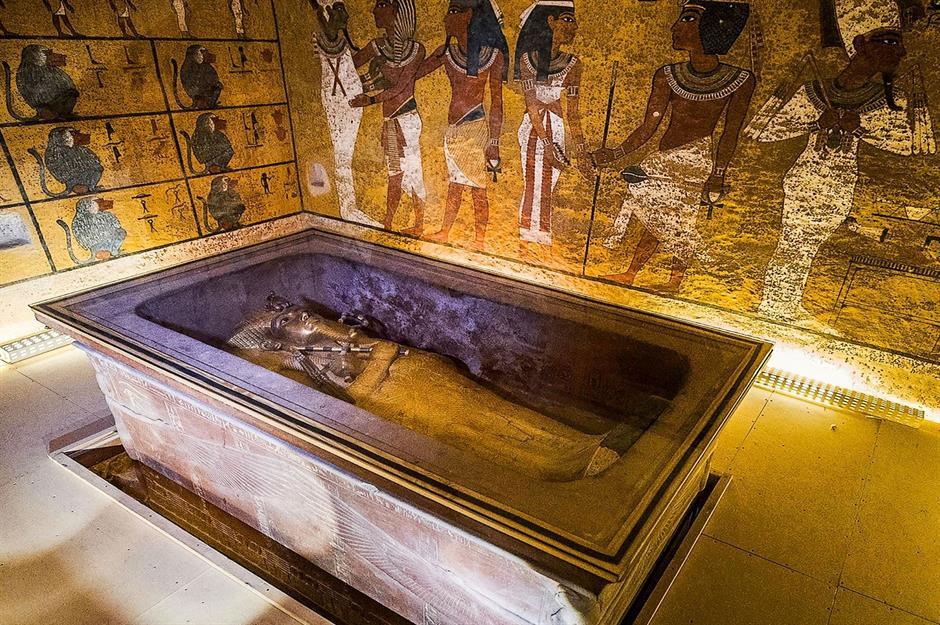
Nick Brundle Photography/Shutterstock
Tutankhamun ruled over Egypt for just 10 years, until around 1324 BC, when he passed away at the tender age of 19. The young king was little known until British archaeologist, Howard Carter, discovered his tomb in 1922. The crypt had been sealed for around 3,000 years and the news was met with global excitement. Inside, Carter found more than 5,000 artefacts, including gold coffins, ancient chariots and Tut’s 24-pound solid gold death mask, which is currently on display in The Egyptian Museum in Cairo.
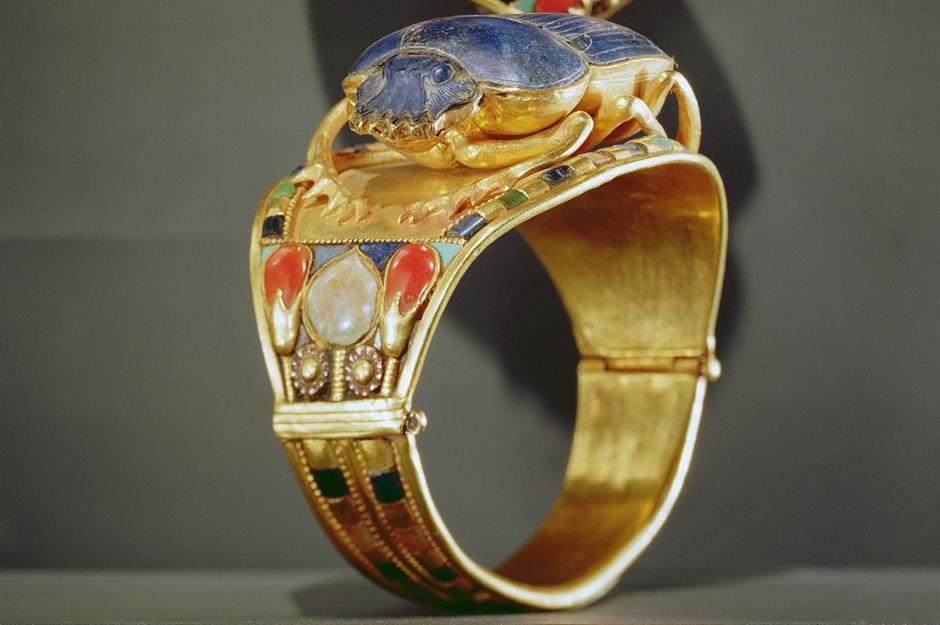
Art Images/Getty Images
This spectacular scarab bracelet is just one of the items found inside Tutankhamun’s shrine. Formed from gold and lapis lazuli, the intricate bracelet shows how ornate Egyptian jewellery was. Regardless of gender or status, every Egyptian owned jewellery and over the centuries endless precious charms and trinkets have been discovered. From The British Museum in London, to The Met in New York, there are countless places you can go to see these gorgeous creations for yourself.
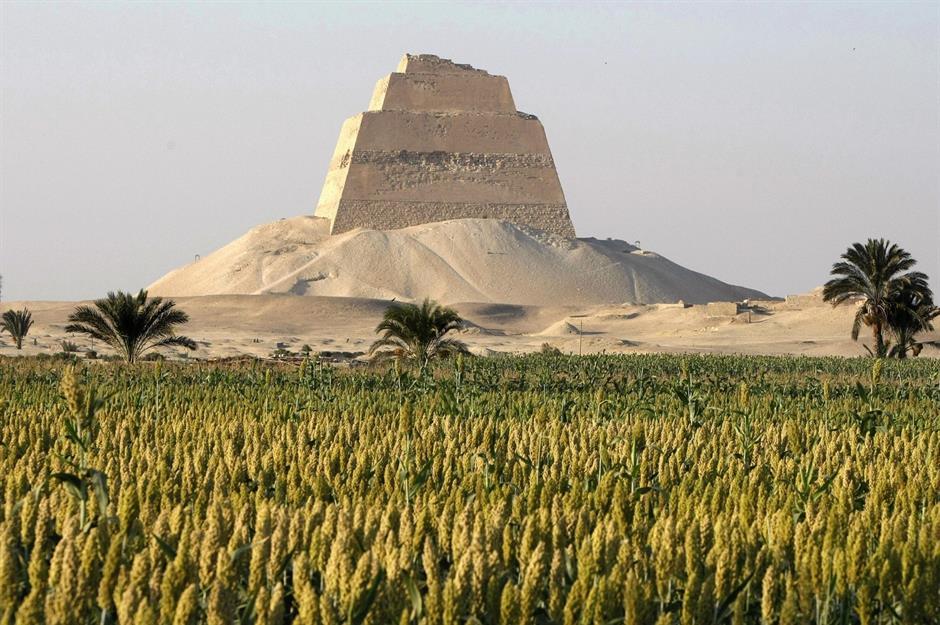
CRIS BOURONCLE/AFP via Getty Images
As one of Egypt’s most unique pyramids, Meidum is thought to be the country’s first straight-sided pyramid. However, it wasn’t structurally sound and parts caved in over time, leading to the nickname, “the collapsed pyramid”. Located around 62 miles (99.7km) from Cairo, Meidum is thought to have been built by King Snefru during the 4th Dynasty and once boasted exterior steps. These were eventually packed with stone before the entire structure was wrapped in limestone.

matias planas/Shutterstock
As one of the most famous shrines in all of Egypt, Luxor Temple is a triumph of ancient engineering. Founded in around 1400 BC, the colossal complex was primarily built by two pharaohs, Amenhotep III and Ramesses II, but Tutankhamun and Alexander the Great are said to have also added to the structure during their reigns. Two towering kings stand guard at the entrance, while the hypostyle hall boasts 32 gigantic carved columns that have to be seen to be believed.
Love this? Follow our Facebook page for more historic features and travel inspiration
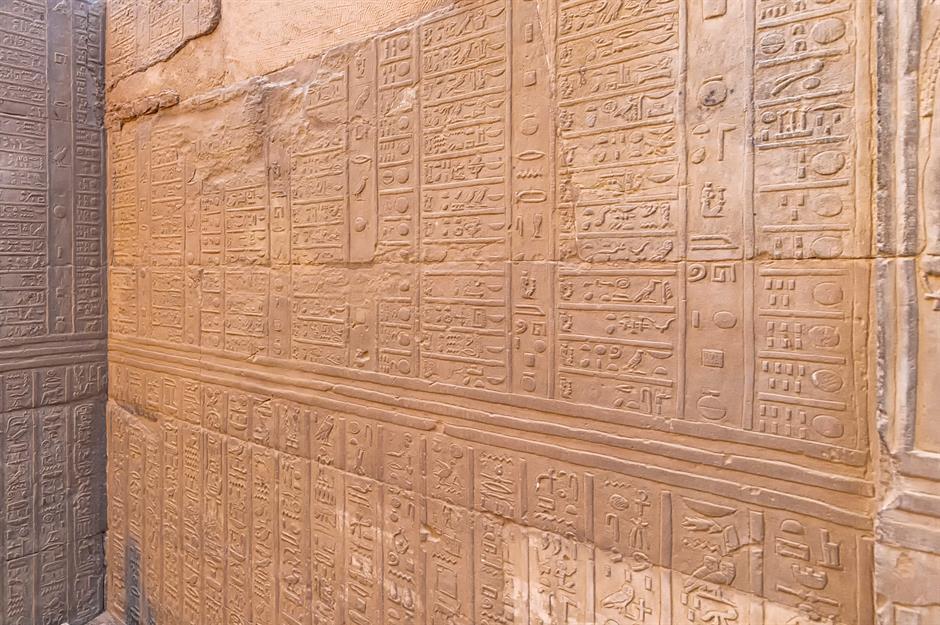
agsaz/Shutterstock
We have a lot to thank the Ancient Egyptians for, not least their beautiful pyramids and impressive temples. It might surprise you to learn that this ancient civilisation reportedly invented makeup, toothpaste, clocks and even calendars. Unlike other age-old calendars, the Egyptian system was the first to boast 365 days to a year, following the solar journey. You can witness these incredible inventions across the country, including at Kom Ombo Temple in Izbat Al Bayyarah.

Graficam Ahmed Saeed/Shutterstock
Dedicated to the deity Horus, the spectacular Temple of Edfu is perhaps Egypt’s best-preserved shrine. Also known as The Temple of Horus, the sanctuary was built sometime between 237 and 57 BC, but for two centuries it remained entirely buried beneath the desert. Luckily, the sand preserved the temple in near-perfect condition and today you can witness extensive wall carvings, imposing statues and a granite shrine thought to be the oldest object in the complex.
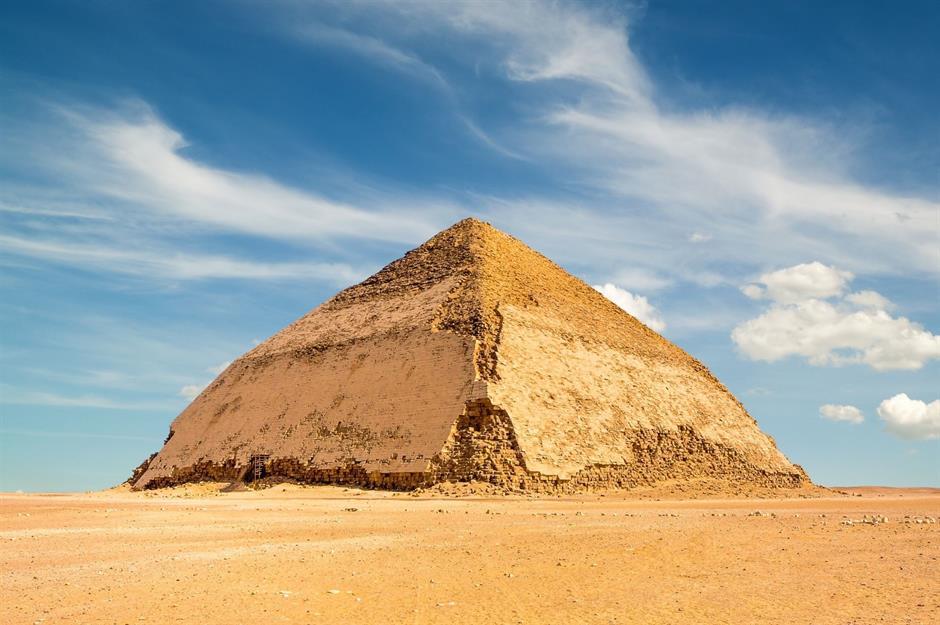
Gurgen Bakhshetyan/Shutterstock
In 2019, Egypt opened this unique pyramid up to the public for the first time in 60 years. The aptly named Bent Pyramid can be found in Dashur on the outskirts of Cairo and is thought to be 4,600 years old. Built for the pharaoh Sneferu, its riches have only just been uncovered. Following restoration efforts, archaeologists found mummies dating back to the Late Period (664–332 BC), as well as important stone-cutting tools and elaborate funerary masks.
Discover more about the Bent Pyramid and other Ancient Egyptian mysteries
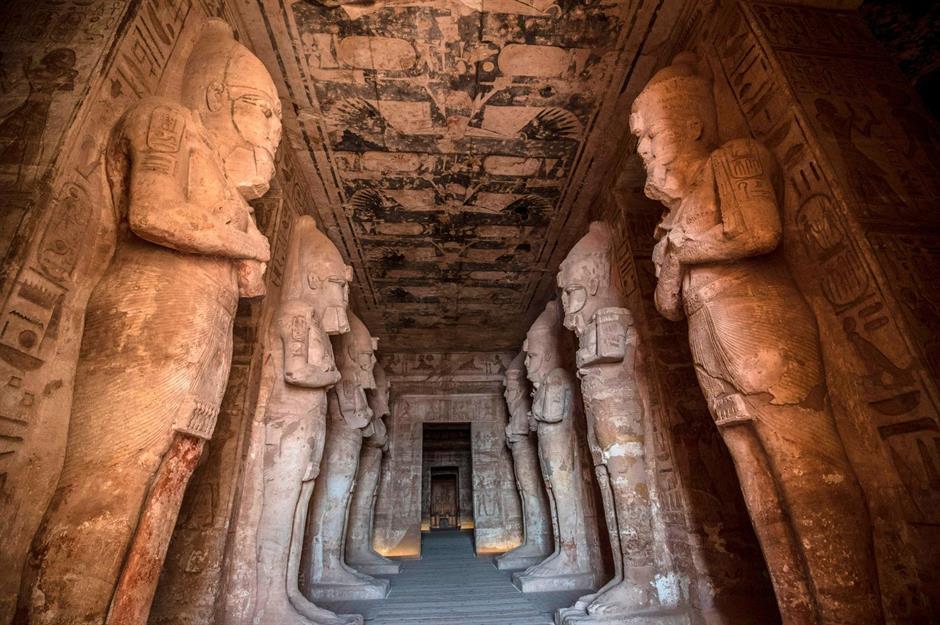
KHALED DESOUKI/AFP via Getty Images
The Abu Simbel Temples might appear to be mythical places from an Indian Jones movie, but they’re very much real. Made up of two shrines, the complex was built by King Ramesses II sometime between 1264 and 1224 BC. For 3,000 years, the complex sat on the banks of the River Nile, but during the 1960s rising water threatened it. So, thanks to a remarkable feat of engineering, the temples were dismantled and rebuilt on higher grounds. Today, visitors can step inside this ancient wonder and take in its remarkable stone statues and buttresses carved with hieroglyphs.
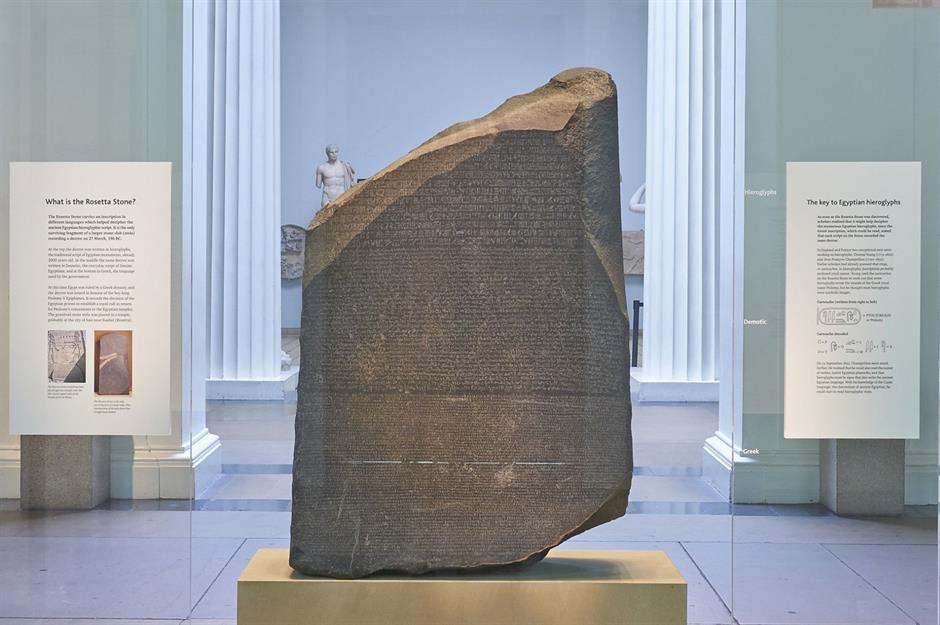
© The Trustees of the British Museum
Perhaps one of the most famous objects in history, the Rosetta Stone was carved in 196 BC and is inscribed with a decree about the pharaoh, Ptolemy. The stone was discovered in July 1799, by soldiers from Napoleon Bonaparte’s army. They stumbled upon it accidentally, while digging foundations for a fort. After Napoleon was defeated, the stone became British property and now sits on display in The British Museum in London, which is home to one of the world’s greatest collections of Egyptian treasures.
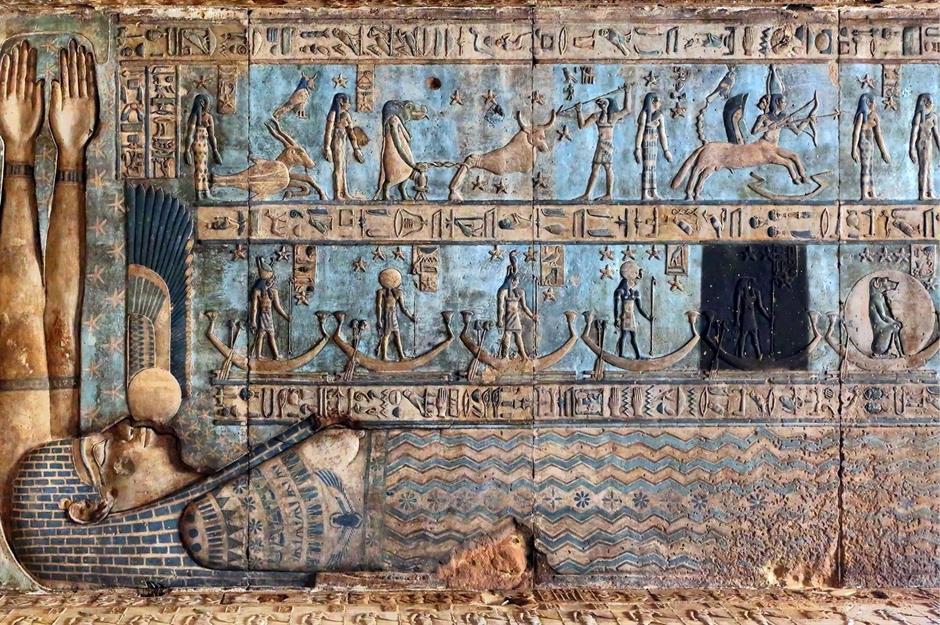
Kokhanchikov/Shutterstock
Thanks to the Rosetta Stone, historians were able to decipher one of the world’s oldest writing systems, hieroglyphics. Since the stone featured inscriptions in three different languages, scholars were able to create a key to the language’s 700 unique pictorial symbols. Today, you will find evidence of this ancient language in shrines across the country, many of which tell the story of the pharaoh buried inside.
Take a look at these ancient mysteries we don’t know the answer to
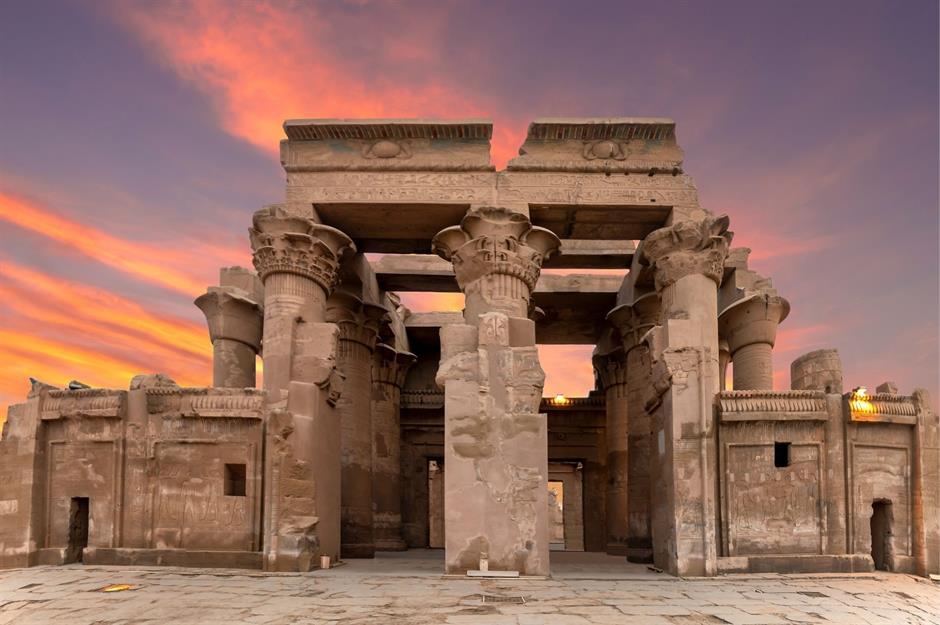
Kom Ombo Temple is one of the most important shrines in all of Egypt, not least because of its stunning architecture. Located on the outskirts of Aswan, some say the structure was built during the Graeco-Roman period, in around 332 BC, while others believe it was constructed during the Ptolemaic dynasty (180–47 BC). Dedicated to two gods, Sobek and Horus, the temple was discovered to hold a number of crocodile mummies, which are now on display in the Crocodile Museum next door.
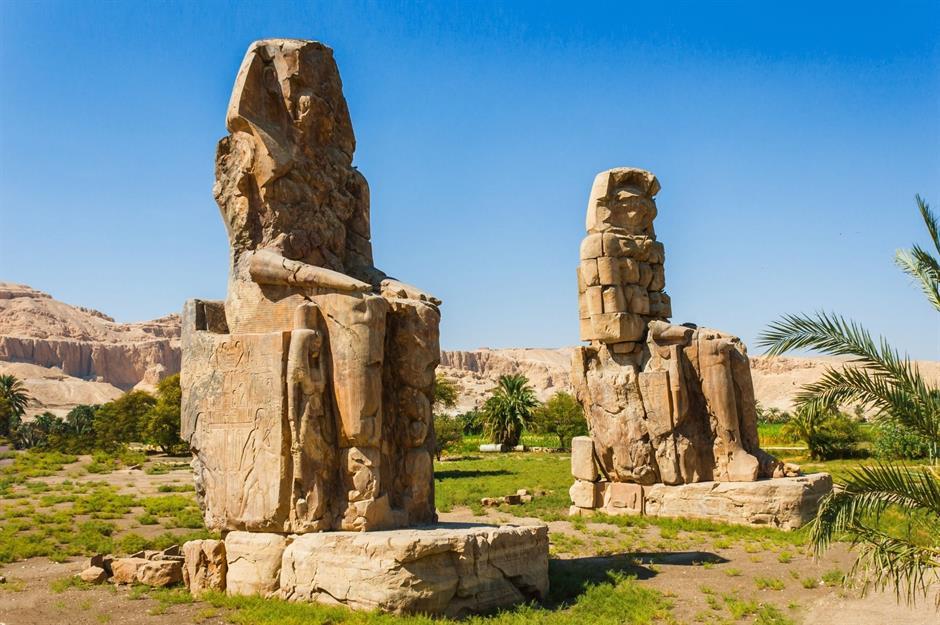
Zhukov Oleg/Shutterstock
Located on the outskirts of Luxor, the Colossi of Memnon monument is formed from two towering statues of Amenhotep III, the ninth pharaoh of the 18th Dynasty. Carved from two single blocks of sandstone, each is thought to weigh 720 tonnes and soars up some 60 feet (18m). They guarded Amenhotep III’s mortuary, which once stood behind them. Sadly, earthquakes and floods led to the disappearance of this once grand shrine and only these statues remain.
Take a look at what the Seven Wonders of the Ancient World would look like today
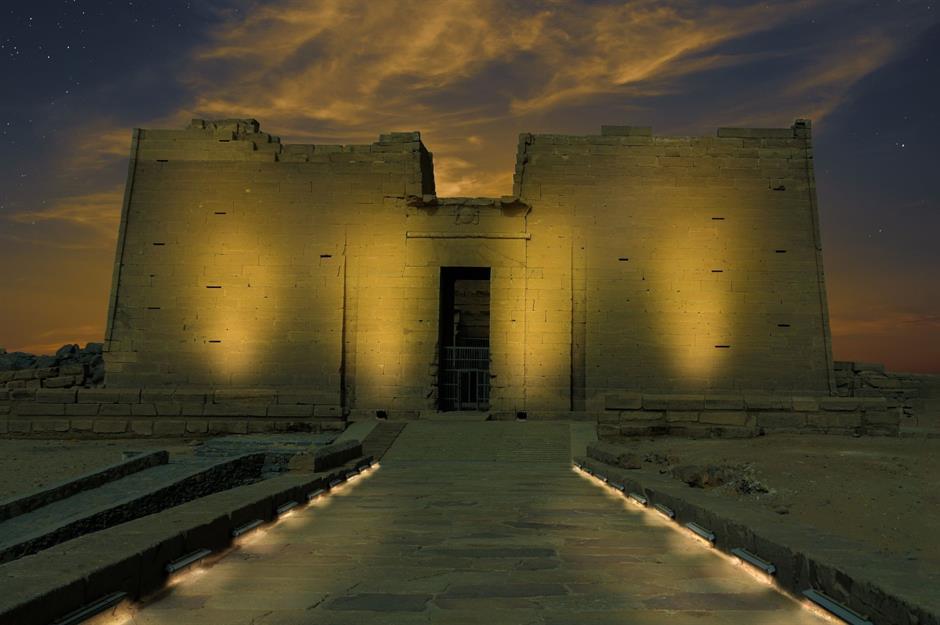
wewi-photography/Shutterstock
Despite being one of the country’s lesser-known shrines, the Temple of Kalabsha is well worth a visit. Positioned on an island off the coast at Aswan, the shrine boasts ancient ruins filled with hieroglyphs and images of Ancient Egyptian deities. According to the Egyptian Tourism Authority, the temple was built during the late Ptolemaic period (332-30 BC) and the complex was completed during the reign of the Roman emperor Augustus (27 BC – AD 14).
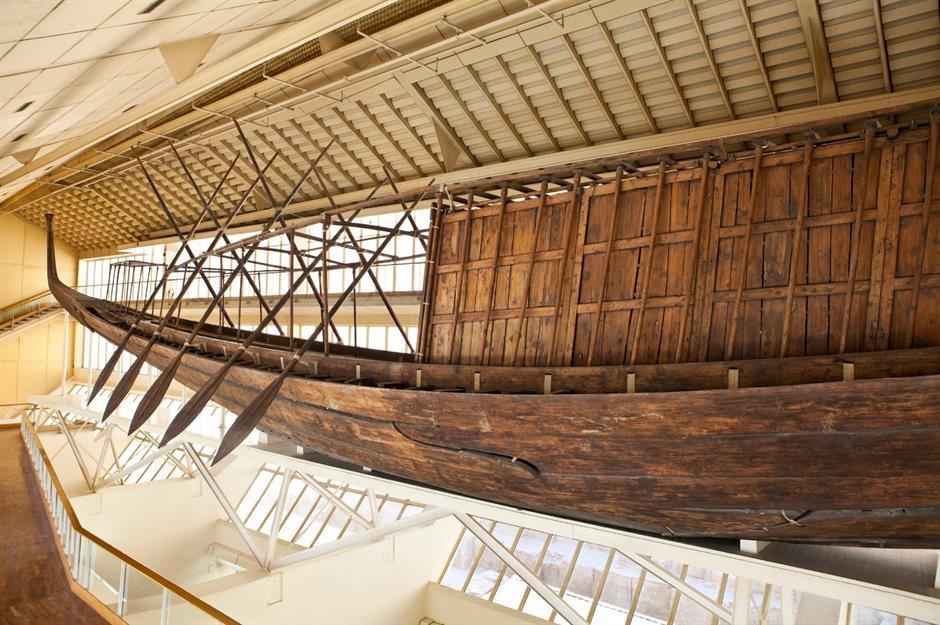
Ramin Talaie/Corbis via Getty Images
It might be hard to believe that a wooden ship built some 4,600 years ago could still remain to this day, but one does. Khufu’s ship was discovered by an Egyptian archaeologist in 1954, buried in pieces next to the Great Pyramid of Khufu in Giza. The purpose of the 144-foot-long (43.9m) vessel still remains a mystery, but many believe it was used to transport pharaoh Khufu’s body down the Nile to his final resting place. The spectacular boat took 20 months to remove from the ground and is now on display at the Solar Boat Museum in Giza.
Here’s where you can see more of the world’s famous ships
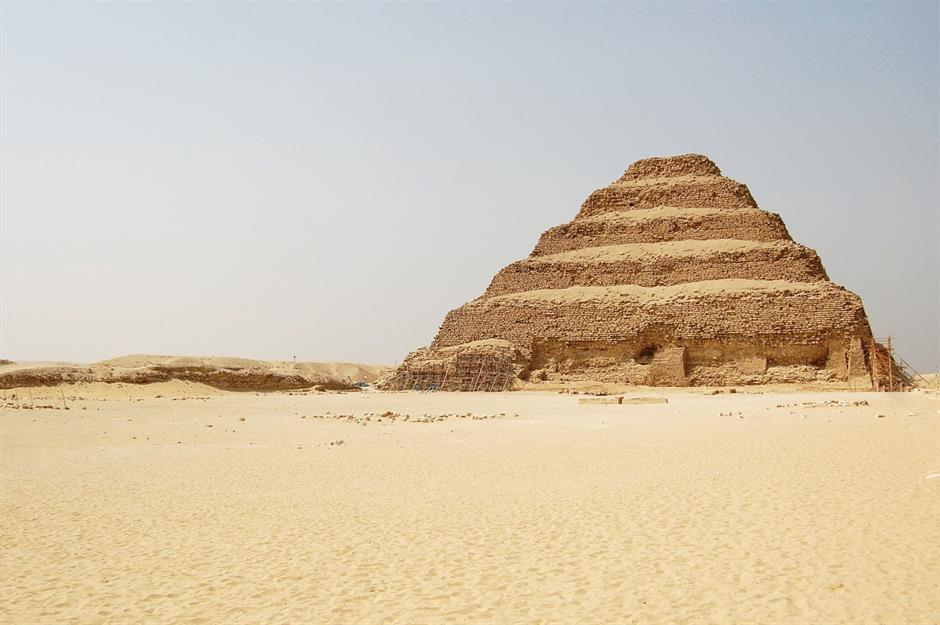
trappy76/Shutterstock
Egypt’s unique architecture started with the Pyramid of Djoser. Pharaoh Djoser (c. 2650 to 2575 BC) was the first king to build with stone. Before his day, graves were simple rectangular monuments made from clay bricks, but Djoser had bigger ideas. The king created Egypt’s first step pyramid and the rest is history. When completed, the pyramid stood 204 feet (62m) high and was the tallest structure of its time. Today, you can enjoy some of the best views of the Nile from its peak.
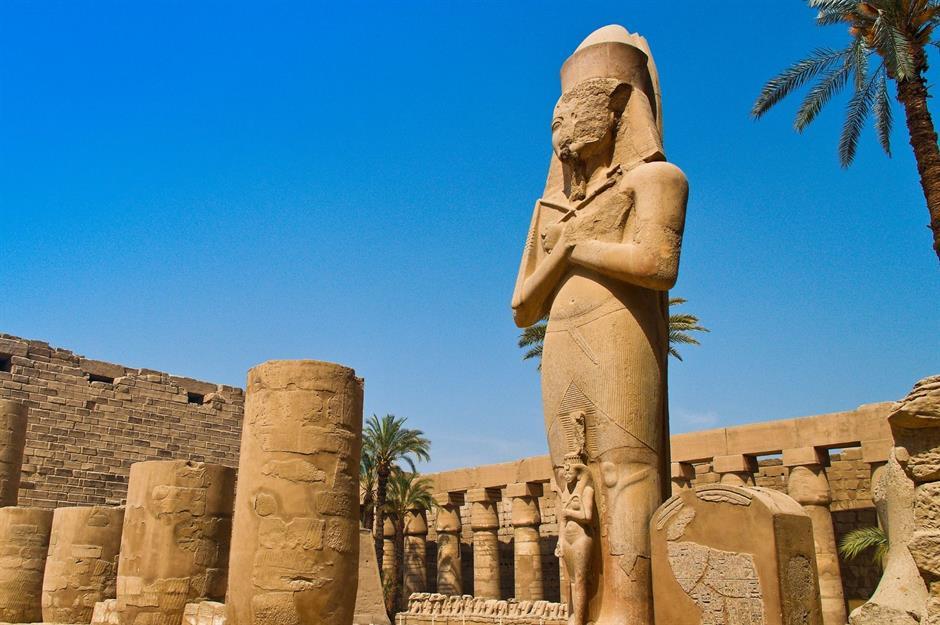
Lisa-S/Shutterstock
Protected by the World Monuments Fund, Karnak Temple Complex is a stunning example of classical Egyptian architecture. Located in Luxor, the shrine took an estimated 1,000 years to build, with most work taking place between the 12th and 20th Dynasties. During its prime it was the largest and most important religious complex in the country. In fact, the Temple of Amun-Ra which can be found at the site, is considered to be the largest religious building in history.
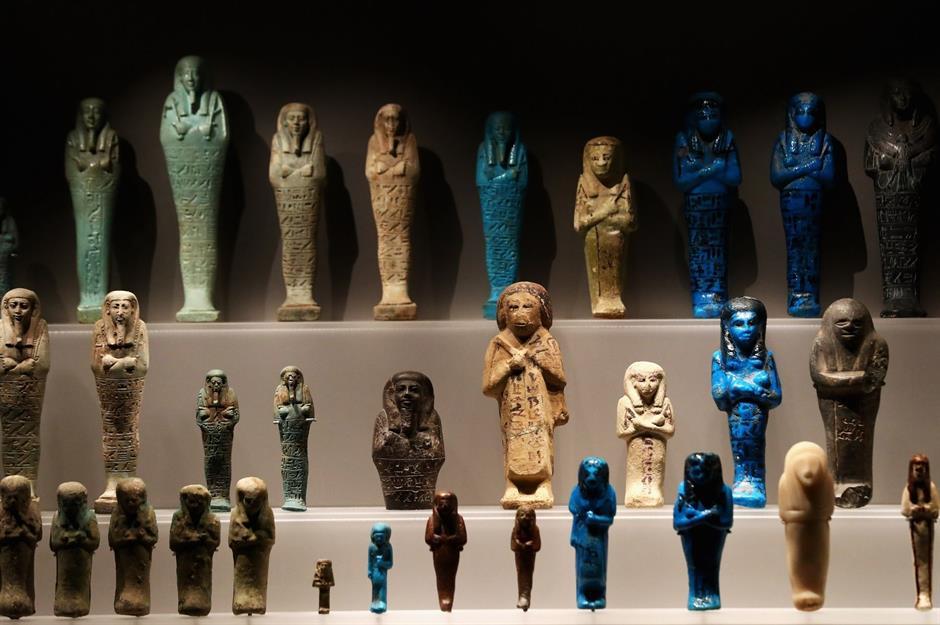
Dean Mouhtaropoulos/Getty Images
According to the Ministry of Antiquities, the Egyptians were big believers in talismans. They created symbolic objects thought to have magical properties, to protect the wearer. Some amulets were carried around while others were incorporated into jewellery, but they were especially important during the burial process. Amulets would be wrapped into mummy bandages, to ensure a peaceful afterlife for the deceased. You can see some of these little treasures at The Egyptian Museum in Cairo and the V&A in London.
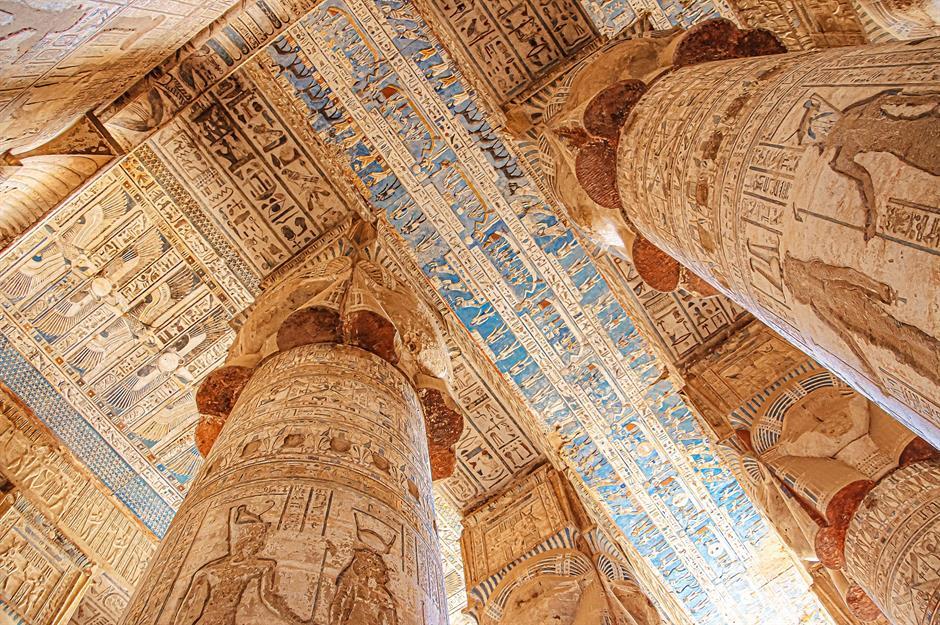
Abrilla/Shutterstock
The Dendera Temple Complex can be found in Qism Qena and harbours plenty of fascinating assets. In fact, a basilica, a sacred lake and numerous shrines can be found inside its walls. Dating back to the Ptolemaic era, the complex contains one of the best-preserved gems in all of Egypt, the Temple of Hathor. An incredible example of Pharaonic architecture, the shrine boasts a monumental gateway, soaring carved pillars and a magnificent ceiling decorated with hieroglyphs.
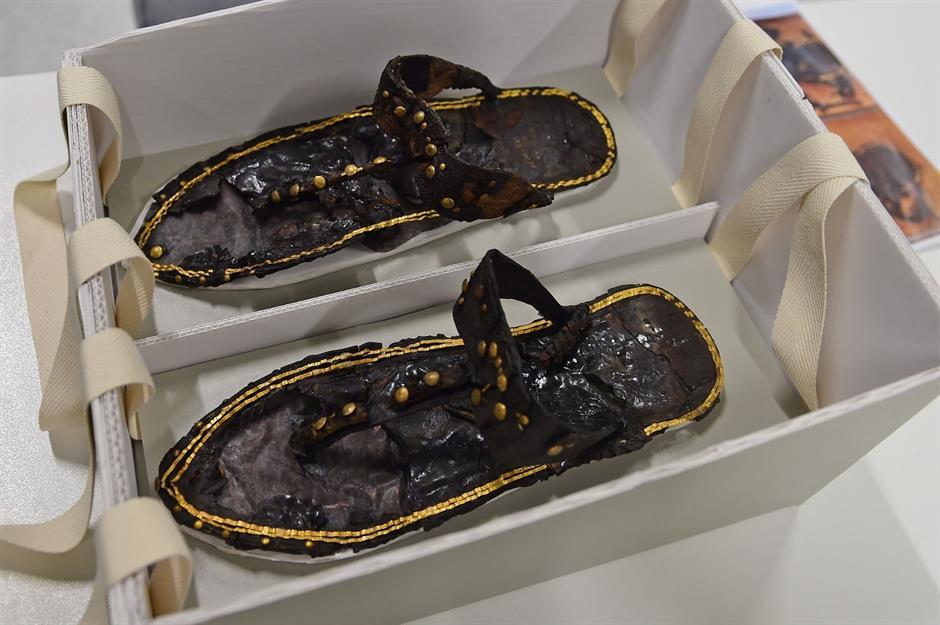
Xinhua/SIPA USA/PA Images
Historians have made it incredibly easy for us to picture the Ancient Egyptians. From their chic linen robes, to their statement eye makeup, this civilisation certainly had a thing for fashion. In fact, according to Sky History, the Egyptians might be responsible for giving the world high heels. Plenty of remarkable items of clothing have been found over the years, including this pair of sandals that once belonged to Tutankhamun. The gilded shoes are currently on display at the Grand Egyptian Museum in Cairo.
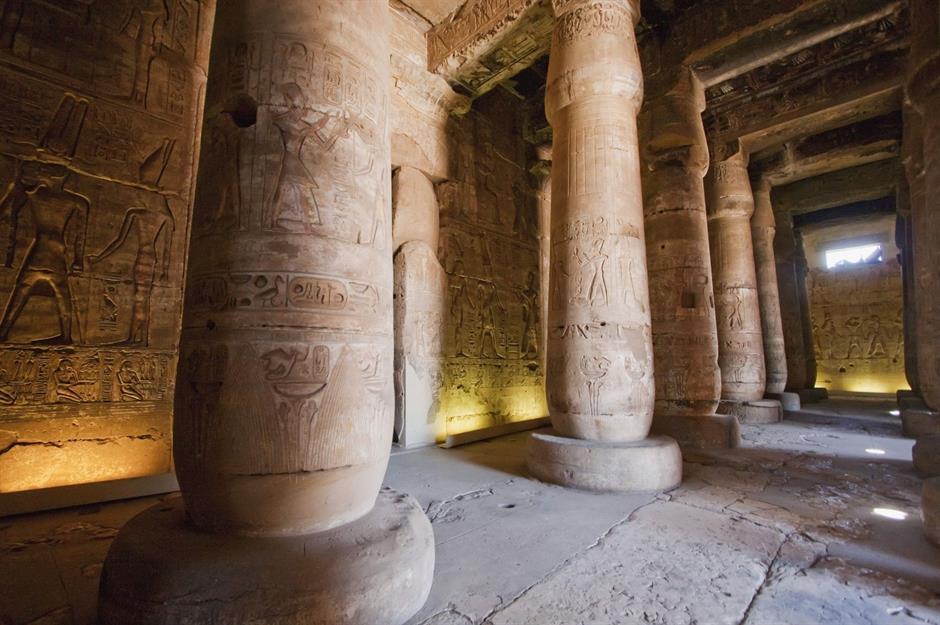
Peter Langer/Zuma Press/PA Images
The Temple of Seti can be found in Abydos and was built by pharaoh Seti I and his son, Rameses II, in around 1279 BC. The remarkable temple once offered multiple courts and chambers, as well as seven chapels. It’s said that the temple’s stone reliefs are some of the finest in the country. One wall boasts the names of 76 pharaohs, but some names are missing, including Tutankhamun’s. Seti didn’t consider him to be a genuine king! The wall is considered an important historical database that covers over 1,600 years of history.
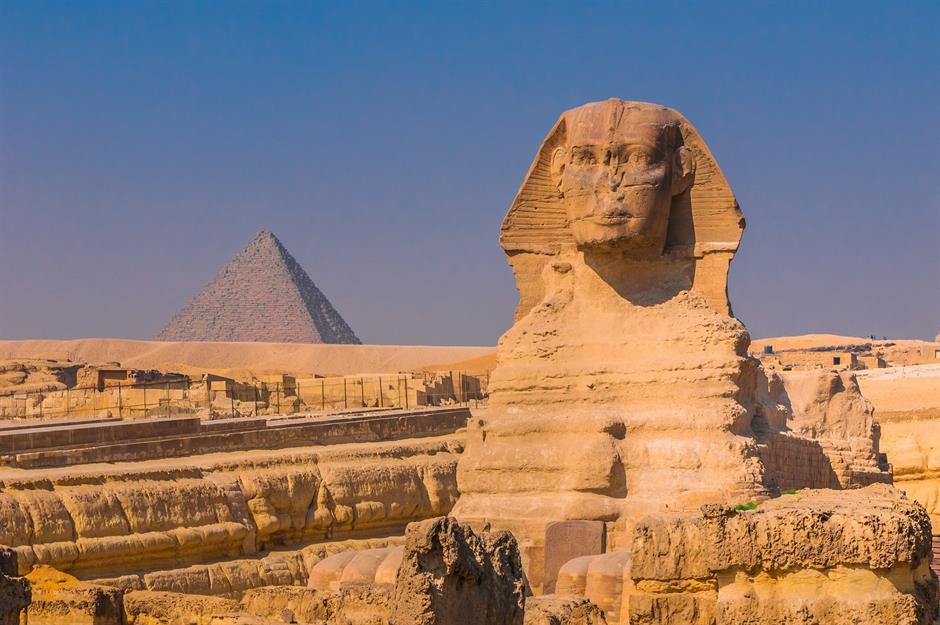
javarman/Shutterstock
As one of Egypt’s most famous monuments, The Great Sphinx is also one of the world’s largest statues. The towering limestone structure guards the Pyramid of Khafre in Giza and is 240 feet (73m) long and 66 feet (20m) tall. Featuring a lion-like body and a human head adorned with a headdress, the statue is thought to have taken three years, and 100 labourers, to complete. Sadly, due to exposure, the figure has deteriorated over the years, but efforts are being made to preserve it.
See how the Great Sphinx and more famous landmarks used to look in these vintage photos
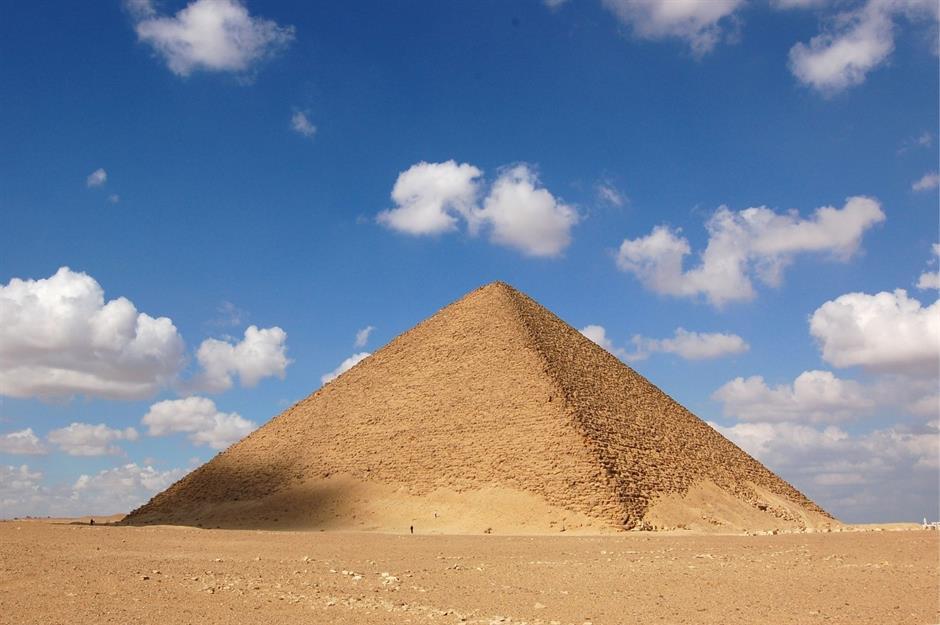
Zhang Baohuan/Shutterstock
Also known as the North Pyramid, the Red Pyramid is the third-largest in Egypt. Named after its rust-coloured limestone bricks, the pyramid can be found in Dahshur and was built for the pharaoh Snefru some time between 2575 and 2551 BC. Thought to be the first ‘true’ pyramid, because of its straight sides and lack of steps, this iconic landmark is fully accessible, meaning visitors can step inside its remarkable burial chamber and take in 4,000 years of history.
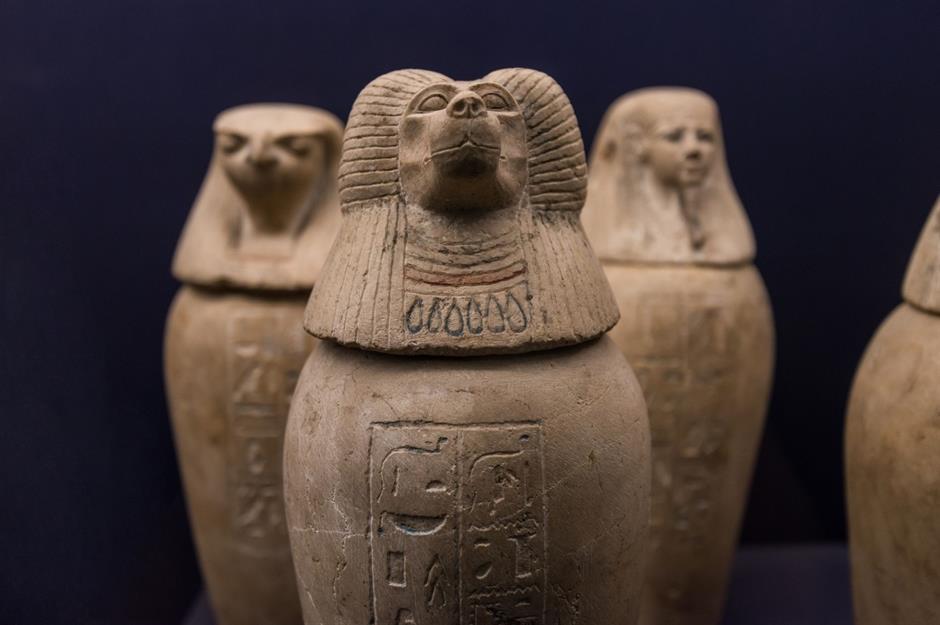
Victor Jiang/Shutterstock
Akin to early funeral urns, canopic jars were used by the Ancient Egyptians during the mummification process. Beautifully made from limestone, wood or alabaster, these ornate containers stored the stomach, lungs, liver and intestines of the deceased, the organs believed to be needed in the afterlife. The heart was left inside the body, since it was thought to be linked to the soul. From the Smithsonian National Museum of Natural History in Washington DC, to the Louvre in Paris, these remarkable treasures can be found in institutions around the world.
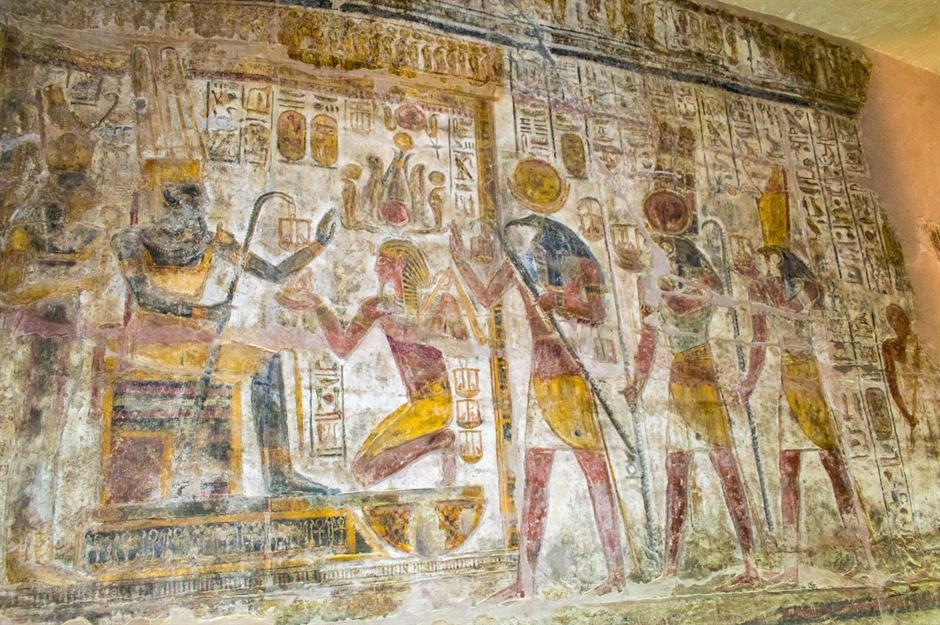
Mohamed Ramez/Shutterstock
Small and humble, the Temple of Amada is still well worth exploring. Dedicated to two gods, Amun and Ra-Horakhty, it’s considered to be one of the most important temples in Nubia. Most of the structure was built by Thutmose III, Amenhotep II and Thutmose IV, between 1479 and 1390 BC, and important historic tales are depicted on its walls. You can currently take a virtual tour of the temple online, thanks to the Ministry of Tourism and Antiquities.
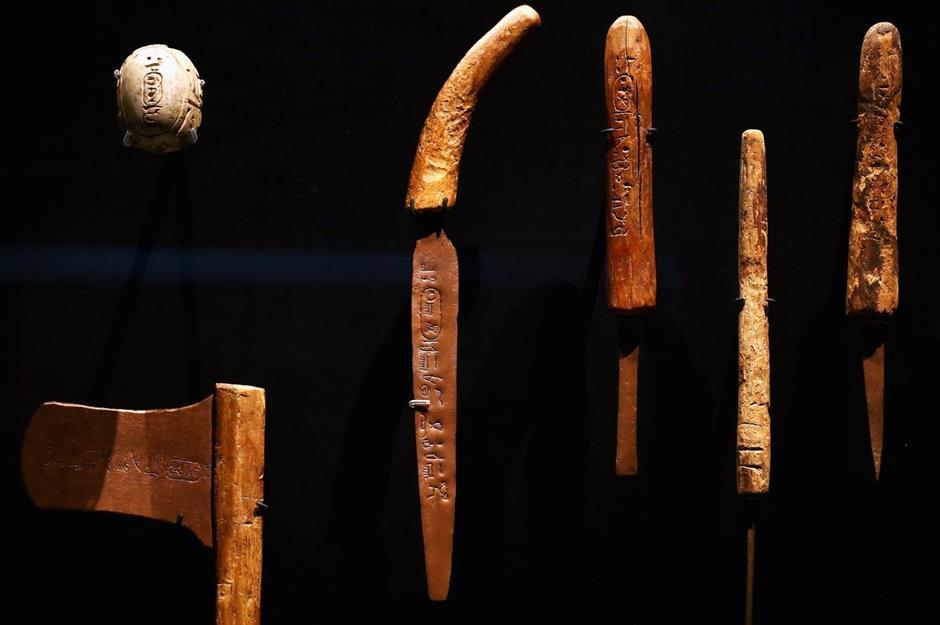
Of course, no statue or pyramid could be built without the right tools. From bronze-tipped spears and shields, to battle axes, stone polishers and chisels, the Egyptians had an implement for every job. Wonderfully preserved Ancient Egyptian tools can be found in museums around the world, including The British Museum in London, giving us a fascinating insight into how some of the world’s greatest treasures were actually achieved.
Here, more of Ancient Egypt’s most incredible wonders are revealed
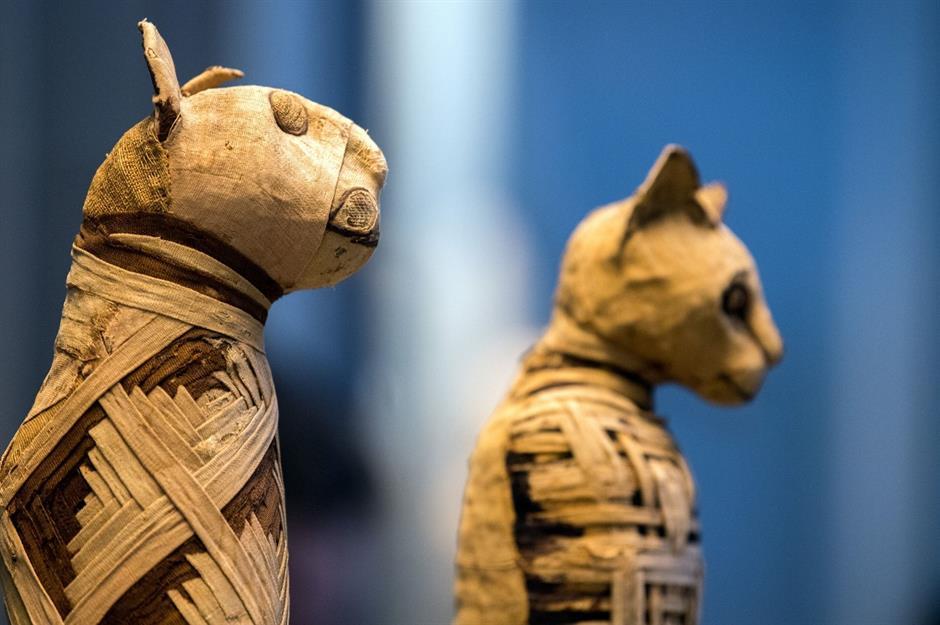
Andrea Izzotti/Shutterstock
The Egyptians didn’t just embalm humans for burial. Considered to be sacred animals, cats were often mummified and placed inside tombs with their owners, while others were intended as offerings to the gods. In 2004, archeologists made a fascinating discovery near Saqqara. They uncovered hundreds of mummified cats, including cheetahs and leopards, as well as crocodiles and an enormous beetle four times the normal size. These unique antiquities are now on display in The Grand Egyptian Museum in Cairo.
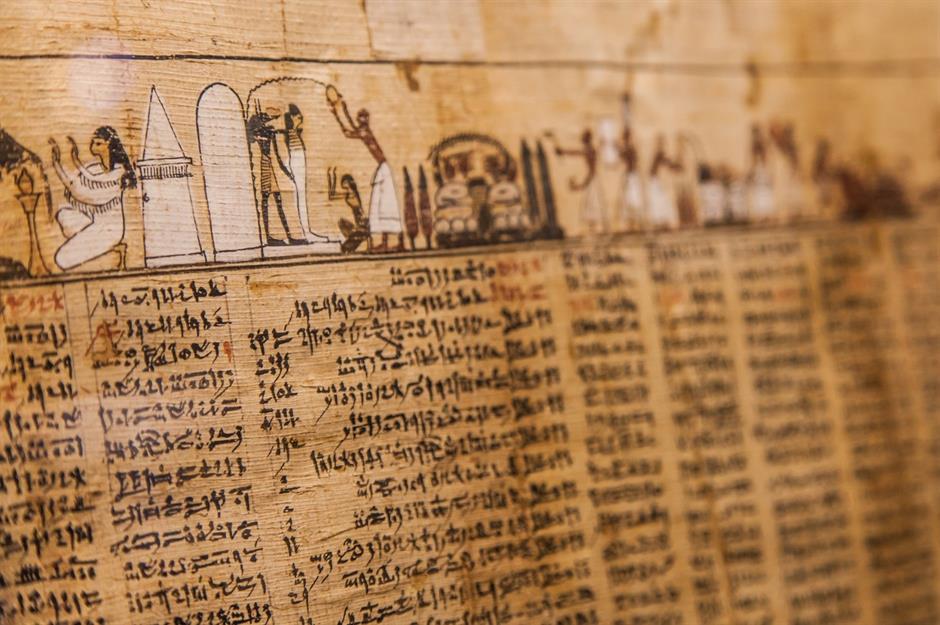
Paolo Gallo/Shutterstock
First translated by Sir E. A. Wallis Budge in 1888, the Book of the Dead is considered to be a collection of magical spells that the Egyptians would have once used to help them transition to the afterlife. Formed from a roll of papyrus with hieroglyphics, only the wealthiest of people would have been able to afford one of these important books. Examples of the Book of the Dead can be found in galleries across the world, including at The British Museum in London.

Unai Huizi Photography/Shutterstock
Located on the island of Philae, the Temple of Isis was almost destroyed when the Aswan Dam was built in the 1960s. Luckily, UNESCO intervened and assisted the Egyptian government with a massive relocation project. The temple was carefully taken apart and rebuilt on Agilkia Island. Today, it’s considered to be one of Egypt’s best-preserved shrines. Highlights include the columns of the hypostyle hall and the unfinished Kiosk of Trajan, which dates back to AD 98.





